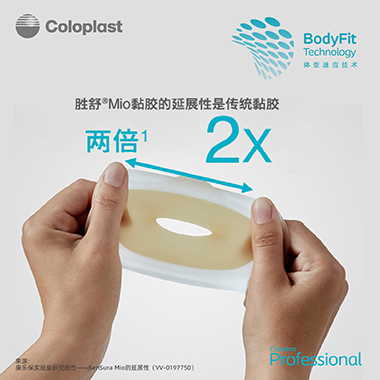Volume 42 Number 4
Reaffirmation
Jenny Prentice
For referencing Prentice J. Reaffirmation. WCET® Journal 2022;42(4):7
DOI https://doi.org/10.33235/wcet.42.4. 7
Reaffirmation has several meanings, including to re-state, reiterate, confirm, endorse or repeat1. Within this issue and the previous March, June and September issues of the WCET® Journal there are numerous examples or themes that encompass the meaning of reaffirmation. Primarily, as clinicians, educators, managers or researchers, our respective practices should be founded on current available evidence and principles of best practice.
The importance of early engagement with biomedical statisticians when commencing clinical research in wound management has been reiterated frequently by Dr John Stephenson in his series of articles addressing study design, questionnaire design and descriptive methods for presenting wound care data. In this issue and within his fourth article that addresses statistical testing in wound care, he reaffirms this premise. Prior consultation with a biomedical statistician allows discussion on the purpose and type of research, the study population to be examined, hypotheses or questions to be asked and, consequently, what statistical tests may need to be considered to determine study outcomes and practice implications. These articles are practical guides for novice researchers and those undertaking quality improvement projects as well as being timely reminders for those more experienced2–4.
The potential for peristomal skin complications (PSC) is well recognised, and improving our understanding of and consensus of opinion on the taxonomy associated with stomal, parastomal and PSCs was addressed by Carville et al in our September issue5. Hansen et al, in proposing a risk factor model on PSC, reaffirms that PSC have a negative impact on patients’ quality of life, and, further, that clinicians are better able to assist patients to avoid PSC if they are able to apply a framework such as the risk factor model to guide clinical decision making. Processes used to determine inherent factors within the risk factor model are described and defined under three main categories – Healthcare system, Individual with an ostomy, and Ostomy product.
Listening to and understanding the patients’ perspective of their medical condition and how this may impact on identified goals of care is further reiterated by Costa and Camargo-Plazas in their qualitative study that explored patients’ experiences of living with type 1 and type 2 diabetes and associated complications such as diabetic foot ulcers (DFU). The authors explored patients’ perceptions of diabetes, the complexity of care, and consequences of unregulated diabetes and living with a DFU using two frameworks – social constructivism and symbolic interactionism. A conclusion drawn is that healthcare professionals would benefit from additional training to focus on holistic and cooperative management of diabetes and DFUs.
Dr Elizabeth Ayello, our third WCET® recipient of the 2022 Lifetime Achievement Award from the World Union of Wound Healing Societies reaffirms, in conjunction with Dr Delmore, the availability of pressure injury (PI) risk assessment instruments to identify patients’ susceptibility to developing PIs. The genesis of risk assessment instruments is described, as are some changes in the subcategories of these tools to better align with current evidence and guidelines for PIs. Risk factors for specific patient populations at ‘higher risk’ of PI development are highlighted, as are specific anatomical locations. Ayello and Delmore reiterate that PI risk assessment instruments are adjuncts to clinical decision making with a view to preventing avoidable PIs occurring through early and comprehensive care planning.
As Editor, endorsing the sentiments of the WCET® President Laurent Chabal and President Elect Denise Hibbert that education comes first is not difficult. I can reaffirm an ongoing aim of the WCET® Journal is to always facilitate dissemination of others’ clinical, research, educational or managerial expertise in the field of wound, ostomy and continence nursing for the greater global benefit of health professionals and the people we care for. The WHAM Evidence Summaries for low-and middle-income countries by Haesler are a further example of this.
In closing, I wish to thank all who have contributed to the WCET® Journal throughout the year. Your support is greatly appreciated. Very best wishes for the festive season and new year celebrations.
Sincerely,
Jenny
重申
Jenny Prentice
DOI: https://doi.org/10.33235/wcet.42.4. 7
“重申(Reaffirmation)”有多种含义,包括重新陈述、重申、确认、认可或重复1。在本期以及之前三月、六月和九月的WCET®杂志中,有许多示例或主题包含重申的含义。首先,作为临床医生、教育工作者、管理人员或研究人员,我们各自的实践应以当前可用的证据和最佳实践原则为基础。
John Stephenson博士在其关于研究设计、问卷设计和呈现伤口护理数据的描述性方法的系列文章中频繁重申了在开始伤口管理临床研究时尽早让生物医学统计学家参与的重要性。在本期以及关于伤口护理统计检验的第四篇文章中,他重申了这一前提。事先咨询生物医学统计学家,可以讨论研究的目的和类型、要检查的研究人群、要提出的假设或问题,以及在此基础上可能需要考虑哪些统计检验来确定研究结果和实践意义。这些文章是新手研究人员和承担质量改进项目的人员的实践指南,也是对经验丰富的人员的及时提醒2-4。
造口周围皮肤并发症(PSC)的可能性已被广泛认识,Carville等人在我们的九月刊中讨论提高了我们对与造口、造口旁和PSC相关分类法的理解和意见共识5。Hansen等人在提出PSC的风险因素模型时,重申了PSC对患者的生活质量有负面影响,同时,如果临床医生能够应用风险因素模型等框架来指导临床决策,他们就能够更好地帮助患者避免PSC。用于确定风险因素模型中固有因素的过程在三个主要类别下进行描述和定义Å\Å\医疗保健系统、造口患者和造口产品。
Costa和Camargo-Plazas在其定性研究中进一步重申了倾听和理解患者对其医疗状况的看法以及这如何影响已确定的护理目标,该研究探讨了患者患有1型和2型糖尿病以及糖尿病足溃疡(DFU)等相关并发症的经历。作者使用两个框架Å\Å\社会建构主义和符号互动论,探讨了患者对糖尿病的认知、护理的复杂性以及糖尿病和DFU患者不受管制的后果。得出的结论是,医疗保健专业人员将从专注于糖尿病和DFU整体和合作管理的额外培训中受益。
Elizabeth Ayello博士是世界伤口愈合学会联盟颁发的2022年终身成就奖的第三位WCET®获得者,她与Delmore博士一起重申了压力性损伤(PI)风险评估工具的可用性,以确定患者发生PI的易感性。他们描述了风险评估工具的起源,以及这些工具子类别的一些变化,以便更好地与PI的当前证据和指南保持一致。强调了发生PI“风险高”的特定患者人群的风险因素,以及特定的解剖位置。Ayello和Delmore重申,PI风险评估工具是临床决策的辅助手段,旨在通过早期和综合护理计划预防可避免的PI发生。
作为编辑,赞同WCET®主席Laurent Chabal和候任主席Denise Hibbert关于教育优先的观点并不难。我可以重申,WCET®杂志的一个持续目标是始终促进他人在伤口、造口和失禁护理领域的临床、研究、教育或管理专业知识的传播,使全球范围内的医疗保健专业人员和我们护理的人员获得更大的受益。Haesler对低收入和中等收入国家的WHAM证据总结就是这方面的另一个例子。
最后,我要感谢一年来为WCET®杂志做出贡献的所有人。非常感谢你们的大力支持。致以最美好的祝福,愿你们节日快乐,新年快乐。
谨致问候,Jenny
Author(s)
Jenny Prentice
PhD, BN, RN, STN, FAWMA
References
- Merriam-Webster.com. “Reaffirmation”; 2022. Available from: https://www.merriam-webster.com/dictionary/reaffirmation.
- Stephenson J. Study designs in wound care. WCET® J 2022;42(1):12–15. doi:10.33235/wcet.42.1.12-15
- Stephenson J. Designing an effective questionnaire in wound care. WCET® J 2022;42(2):24–29. doi:10.33235/wcet.42.2.24-29
- Stephenson J. Descriptive presentation of wound care data. WCET® J 2022;42(3):30–33. doi:10.33235/wcet.42.3.30-33
- Carville K, et al. A consensus on stomal, parastomal and peristomal complications. WCET® J 2022;42(3):12–22. doi:10.33235/wcet.42.3.12-22


